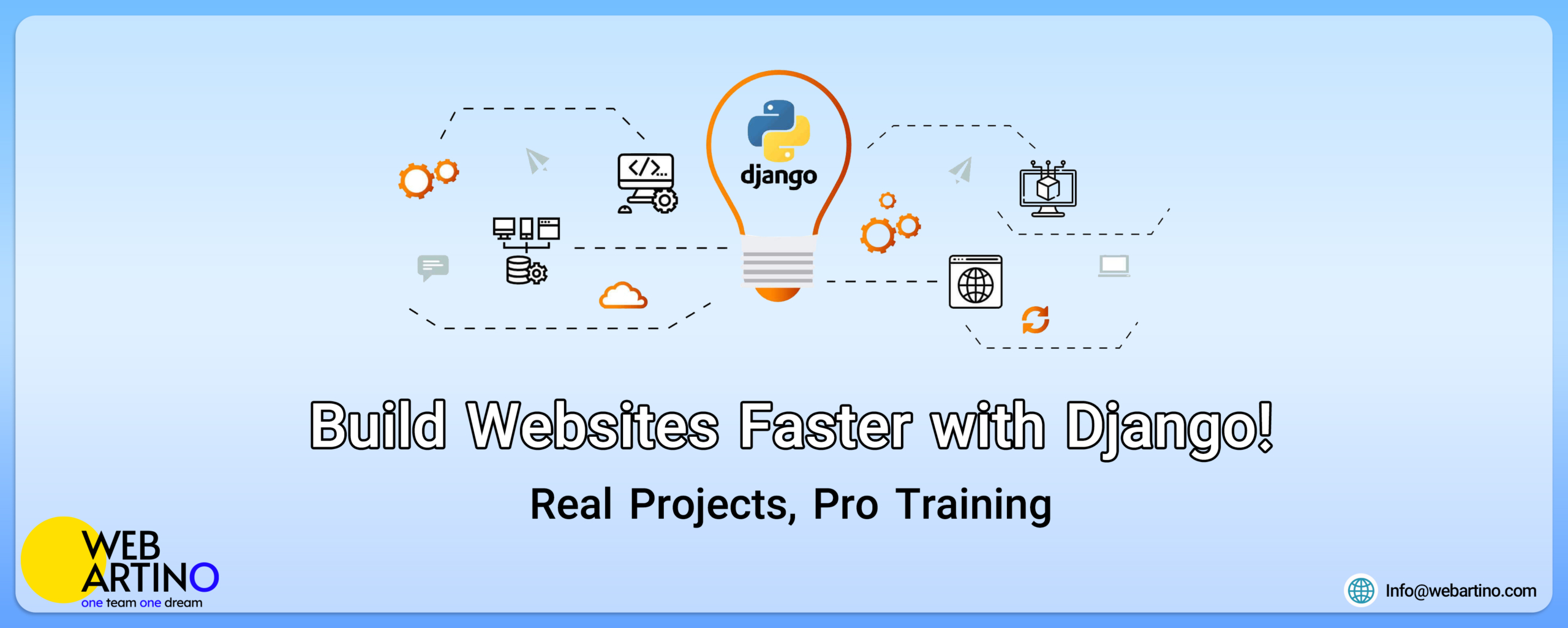🔹 Prerequisites for Learning Django
Before diving into Django, you should have a basic understanding of:
✅ Python programming (variables, loops, functions, OOP)
✅ HTML, CSS, and JavaScript (basic web development concepts)
✅ Databases and SQL fundamentals (recommended but not mandatory)
Required Tools
🖥 Installing Django
- Install Python (if not installed): python.org
- Install Django using pip:
- Verify installation (
django-admin --version) - Setting up a virtual environment:
🛠 Development Environment:
- VS Code / PyCharm – Recommended IDEs
- SQLite / PostgreSQL / MySQL – Supported databases
- Postman – API testing tool
🔹 Chapters
🔹 Chapter 1: Introduction to Django and MVT Architecture
✅ Understanding Django’s core philosophy: DRY (Don’t Repeat Yourself)
✅ Django’s Model-View-Template (MVT) pattern
✅ Creating your first Django project:
✅ Understanding Django’s directory structure
Hands-on Exercise:
🔹 Create a basic Django project and set up a homepage.
🔹 Chapter 2: Django Models and Database Management
✅ Introduction to Django’s ORM (Object-Relational Mapping)
✅ Creating Django models (models.py):
✅ Running migrations:
✅ Using Django’s SQLite database (default)
✅ Performing CRUD operations in Django’s shell (python manage.py shell)
Hands-on Exercise:
🔹 Create a BlogPost model and test it using Django shell.
🔹 Chapter 3: Django Views and URL Routing
✅ Understanding Django views (views.py)
✅ Writing function-based views (FBV) and class-based views (CBV)
✅ Mapping URLs to views (urls.py):
✅ Using URL parameters and dynamic routing
✅ Handling 404 error pages
Hands-on Exercise:
🔹 Create a custom homepage with dynamic content.
🔹 Chapter 4: Django Templates and Static Files
✅ Creating HTML templates (templates/ folder)
✅ Passing data to templates using Django’s context dictionary
✅ Using template filters and tags ({% for %}, {% if %}, {% block %})
✅ Managing static files (CSS, JavaScript, images)
✅ Implementing Bootstrap for responsive UI
Project:
🔹 Design a blog homepage with dynamic posts and styled UI.
🔹 Chapter 5: Django Forms and User Authentication
✅ Creating Django forms (forms.py)
✅ Handling form validation and error messages
✅ Implementing user authentication (login, logout, register)
✅ Working with Django’s built-in User model
✅ Managing user sessions
Project:
🔹 Build a user registration and login system with authentication.
🔹 Chapter 6: Django Admin Panel and Permissions
✅ Introduction to Django’s Admin Interface (admin.py)
✅ Registering models in the admin panel
✅ Customizing the Django admin dashboard
✅ Implementing user roles and permissions
Hands-on Exercise:
🔹 Customize the admin panel for managing blog posts and users.
🔹 Chapter 7: Django REST Framework (DRF) and API Development
✅ Introduction to RESTful APIs in Django
✅ Installing Django REST Framework (pip install djangorestframework)
✅ Creating API views (views.py)
✅ Serializing Django models (serializers.py)
✅ Handling API requests (GET, POST, PUT, DELETE)
Project:
🔹 Build a RESTful API for blog posts.
🔹 Chapter 8: Deploying a Django Application
✅ Preparing the project for production (DEBUG = False)
✅ Using Gunicorn and Nginx for deployment
✅ Deploying Django on Heroku / AWS / DigitalOcean
✅ Using PostgreSQL instead of SQLite in production
✅ Setting up environment variables for security
Project:
🔹 Deploy a fully functional Django blog application.
🔹 Advanced Topics (Optional)
🚀 Django Channels – Real-time WebSockets for chat applications
🔗 GraphQL with Django – API development with GraphQL
🔐 OAuth & Social Authentication – Login with Google, Facebook, etc.
📧 Sending Emails in Django – SMTP, Gmail, and third-party services
🔹 Final Projects and Career Readiness
🔹 Develop a full-featured eCommerce website (Product listing, cart, payment gateway)
🔹 Create a social media web app (User profiles, posts, comments, likes)
🔹 Build a task management system (CRUD operations, authentication, notifications)




